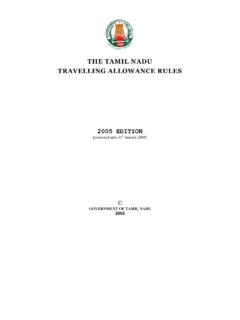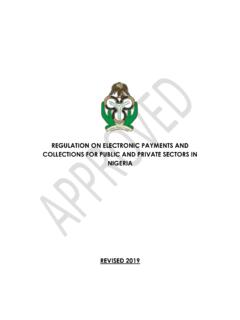Transcription of Office of Chief Counsel Internal Revenue Service …
1 Office of Chief Counsel Internal Revenue Service memorandum CC:TEGE:EOEG:ET2:SLHartford FILES-102495-07 UILC: , , , date: October 22, 2008 to: Lee Patton Deputy Associate Chief Counsel (General Legal services ) Neil Worden Branch Chief (Claims, Labor, & Personnel Law Branch) (General Legal services ) Sunita Lough Director Federal, State and Local Governments Wanda Valentine Analyst Federal, State and Local Governments from: John Richards Senior Technician Reviewer Employment Tax Branch 2 Office of Division Counsel /Associate Chief Counsel (Tax Exempt & Government Entities) subject: Income and Employment Tax Consequences and Proper Reporting of Employment-Related Judgments and Settlements The purpose of this memorandum is to outline the information necessary to determine the income and employment tax consequences, and appropriate reporting of employment-related judgments or settlement payments made by the Service .
2 For your convenience, the memorandum includes charts that can be used as reference tools. This memorandum supersedes the memorandum issued to you dated September 9, 2004. It reflects comments and suggestions received from FSLG and GLS, as well as recent case law and amendments to the Code. This advice may not be used or cited as precedent. PMTA 2009-035 FILES-102495-07 -- 2 -- I. Overview. Determining the correct treatment of employment-related settlement payments is a four-step process. First, determine the character of the payment and the nature of the claim that gave rise to the payment. For example, a payment could be for a lost wages claim brought under Title VII of the Civil Rights Act of 1964.
3 Second, determine whether the payment constitutes an item of gross income. Third, determine whether the payment is wages for employment tax purposes (Federal Insurance Contributions Act (FICA), and income tax withholding). Fourth, determine the appropriate reporting for the payment and any attorneys fees (Form 1099 or Form W-2). II. Character of the payment and nature of the claim. Whether a payment is includable in gross income and whether it is wages for purposes of employment taxes depend upon the character of the payment. The following describes the types of settlement payments or awards that may be received in connection with an employment-related dispute. A. Character of the payment 1. Severance pay. Severance pay is a payment made by an employer to an employee upon the involuntary termination of employment.
4 The right to receive severance pay and the amount of severance pay are usually based on the employee s length of Service . 2. Back pay. Back pay is compensation paid to an individual to compensate the individual for remuneration that would have been received up to the time of settlement or court award but for the employer s wrongful conduct. For example, back pay is awarded to an employee if the employee is illegally terminated by an employer, or to an applicant for employment who is not hired for illegal reasons. Under those circumstances, the back pay relates to a period when no services for the employer were performed. Certain federal statutes, , Title VII of the Civil Rights Act of 1964, and the Age Discrimination in Employment Act (ADEA) of 1967, specifically authorize the recovery of back pay as a remedy for unlawful agency conduct.
5 3. Front Pay. Front pay is paid to an individual to compensate the individual for remuneration that would have been received after the settlement date or court award but for the employer s wrongful conduct and the circumstances , extreme animosity between the employer and employee which make it impracticable to place the employee in the position. FILES-102495-07 -- 3 -- 4. Compensatory damages. Compensatory damages include compensation for physical injury and non-physical injury, , humiliation and defamation, and for the intangible elements of personal injury such as emotional distress and pain and suffering. 5. Consequential damages.
6 Consequential damages are compensation for damage, loss, or injury that do not flow directly and immediately from the act of the party, but are consequences or results of such act. 6. Punitive/liquidated damages. Generally, liquidated and punitive damages are not directly related to the actual loss incurred. Liquidated damages are amounts that parties agree to pay in the event of a breach of an agreement as a substitute for compensatory damages. Liquidated damages may also be imposed by statute, , the Fair Labor Standards Act of 1938 and the Equal Pay Act of 1963. Punitive damages punish the wrongdoer for wrongful conduct. An award of punitive damages against the government is possible only when the government waives its sovereign immunity, , the Civil Rights Act and the Americans with Disabilities Act, below.
7 7. Restoration of benefits. Restoration of benefits may include the payment of health insurance premiums, Thrift Savings Plan employer and employee contributions, and other retirement contributions. B. Nature of the claim 1. Back Pay Act (5 5596(b)(1)). The Back Pay Act covers employees of federal government agencies and other employees of the federal government. Under the Back Pay Act, back pay is awarded to an employee who is found by the appropriate authority under applicable law, rule, regulation, or collective bargaining agreement to have been affected by a wrongful personnel action that resulted in the withdrawal or reduction of all or part of the employee s pay, allowances, or differentials. 2. Title VII of the Civil Rights Act of 1964, 42 2000e, as amended by the Civil Rights Act of 1991, 42 1981a.
8 Title VII of the Civil Rights Act of 1964, as amended by the Civil Rights Act of 1991, prohibits discrimination in employment based on race, color, sex, religion, and national origin, and provides for the award of back pay and attendant benefits, compensatory damages, compensation for emotional distress, and punitive damages. FILES-102495-07 -- 4 -- 3. Age Discrimination in Employment Act (ADEA) of 1967 (29 621). As made applicable to the federal government under 29 633a, the ADEA provides for an award of back pay and other equitable relief, but does not provide for the recovery of compensatory damages of a tort-like nature ( , emotional distress) or liquidated damages.
9 4. Americans with Disabilities Act of 1990 (ADA). Employing the remedial scheme of Title VII and the Civil Rights Act of 1991, the ADA authorizes the recovery of back pay, compensation for noneconomic damages such as emotional distress, and punitive damages. 5. Fair Labor Standards Act of 1938 (FLSA) (29 201). The FLSA requires the payment of minimum wages and overtime pay. The FLSA provides for recovery of unpaid wages, unpaid overtime compensation, and non-punitive liquidated damages, but not compensatory damages of a tort-like nature ( , for emotional distress). 6. Equal Pay Act of 1963 (EPA) (29 206(d)). The EPA is an amendment to the FLSA, prohibiting discrimination on account of gender in the payment of wages by employers. The EPA provides for recovery of unpaid wages, unpaid overtime compensation, and liquidated damages.
10 7. State statutes. State statutes often parallel federal workers rights statutes, but may provide for broader remedies. The remedies available under a particular state statute under which a suit is brought or could have been brought determine whether a claim thereunder sounds in tort (see discussion of IRC 104(a)(2) below). 8. Common law wrongful termination. As for any tort under the common law, a broad range of remedies are available. III. Income taxation of judgment/settlement payments. A. IRC 104(a)(2). This section excludes from gross income the amount of any damages (other than punitive damages) received on account of personal physical injuries or physical sickness. Standing alone, emotional distress is not considered a physical injury or a physical sickness for purposes of 104(a)(2).













